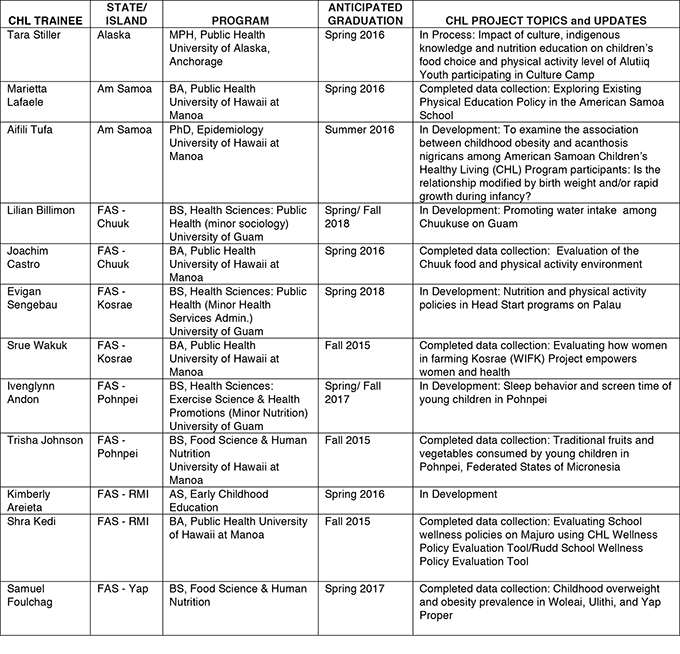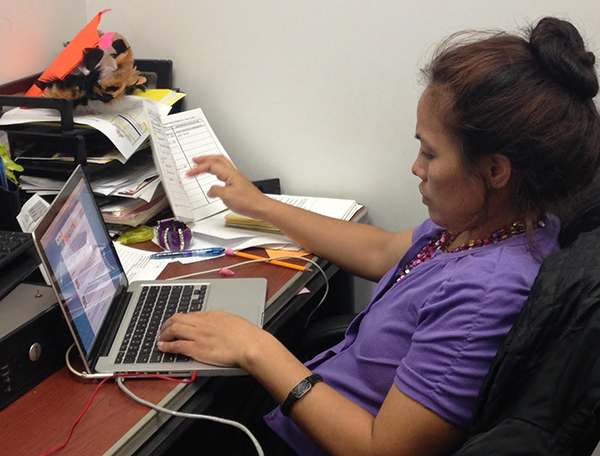
The CHL region-wide team has finished baseline and prevalence surveys in all jurisdictions! We are now finishing the entering of the FAS data, preparing it for an obesity and acanthosis nigricans prevalence paper. As you will see in the Hawaii section of this newsletter, we have developed a CHL data machine!
We have had several CHL team changes. We bid aloha to Aufa’i Areta to retirement in American Samoa, and to Jang Kim to the University of Idaho from CNMI. We wish them well in this new life phase and thank them for their leadership and contributions to CHL. Travis Fleming will lead the CHL American Samoa Team, and Patricia Coleman the CNMI Team. We welcome them to this new role.
CHL Team CNMI has been holding strong, rebuilding, having weathered through Typhoon Soldener. Their offices were destroyed, though they were able to save the CHL data! Our thoughts are with them as they rebuild, still with a minimum of water and electricity weeks later. CHL Strong!
Aloha, Rachel
Professor Rachel Novotny, PhD, RD
Principal Investigator and Program Director, Children’s Healthy Living Program
From the CHL Program
In a previous issue, we talked about what is happening in the lives of CHL’s Cohort 1, and here is a summary of Cohort 2. Cohort 2’s class photo is here. We are thrilled with their progress and excited about the potential impact that these students will have when they return to their homes.
Alaska
CHL Team Alaska
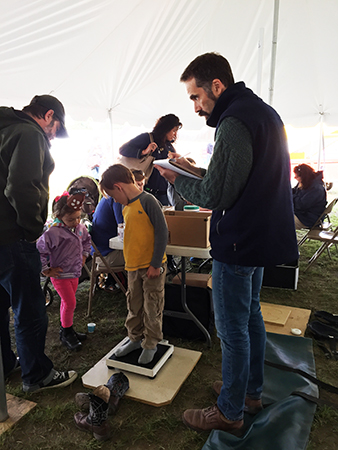
What better time to promote the CHL message than during State Fair season, where cotton candy, deep fried bacon, and other over-the-top culinary concoctions abound. CHL Alaska has offered fair-goers an alternative to calorie-laden treats this summer. In partnership with Cooperative Extension, we have held a number of cooking demonstrations at fairs and other events in our Mat-Su community that feature simple, low-cost ways to prepare produce. Kids and parents gave our fiesta soup, rhubarb pilaf, and summer salad recipes a thumbs-up! We have also given out over 500 samples of tasty fruit-and-herb infused water at events in Mat-Su and Fairbanks. Favorites have been the cucumber-mint and strawberry-basil flavors. In addition to promoting these healthy treats, the Alaska team has been working hard to enroll families in the CHL program! We held 4 recruitment events at the Tanana Valley State Fair in Fairbanks and 2 recruitment events at the Kenai Peninsula Fair. We are over halfway done with measurement in our 2 remaining communities, and getting closer to reaching our goal of finishing data collection by the end of the summer!

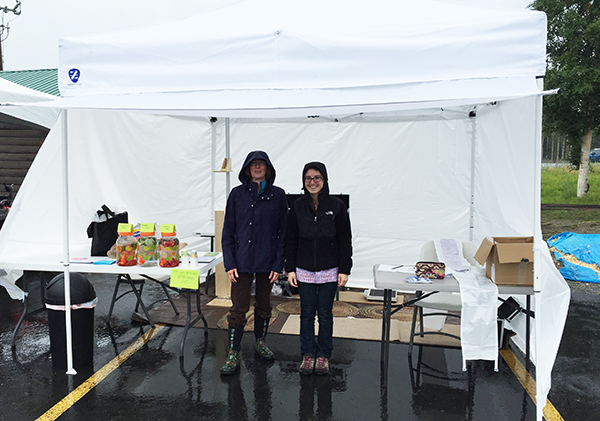
American Samoa
CHL Team American Samoa
Data Entry – Since returning home from the 2015 Annual CHL Meeting in Honolulu, Hawai‘i, the American Samoa CHL team has been keeping themselves rather busy in order to meet the tight deadlines that were agreed upon during the meeting in Honolulu. 24-month follow-up measurements were successfully completed in July after visiting three churches in Pava’ia’i, Aua, and Atu’u villages. To date, the food activity log (FAL) team has successfully mailed 205 FAL’s to Hawai‘i for second pass data entry. American Samoa is also nearing completion of first pass data entry for registration forms. Furthermore, American Samoa has been able to scan and upload most of the other forms to Hawai‘i so that first and second pass data entry can occur.
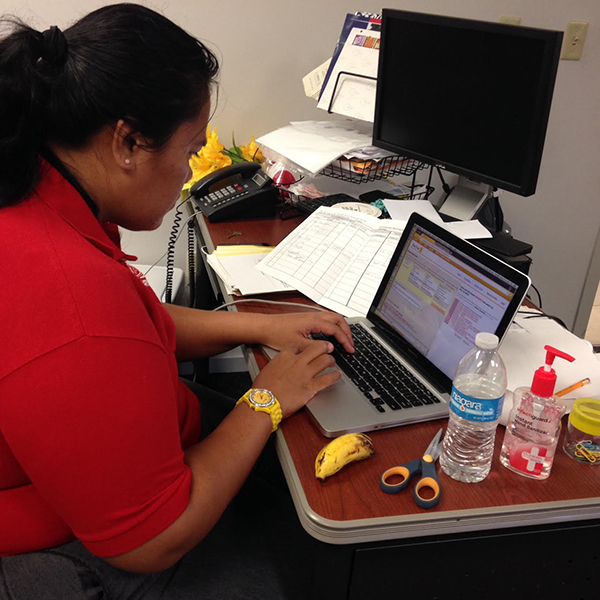
Other Activities – Team American Samoa was able to present some of the baseline preliminary data results to Non Communicable Disease Coalition committee members during a recent meeting in August. Updates were also given during the meeting with respect to intervention activities that have taken place since the fall of 2014. Just the other day, American Samoa’s Lead Site Co-PI and Intervention lead were able to deliver LANA Learning About Nutrition through Activities Deluxe Kits to the local Early Childhood Education (ECE) Center for use at three of its ECE centers. The CHL team has had a very strong relationship with ECE for many years and agreed to provide three LANA kits to their program with the hopes of adapting the curriculum to what’s available locally. The LANA program has the potential to work very well—especially if sustainable gardening, hydroponic, and laupele projects can be successfully integrated at each of the ECE sites.
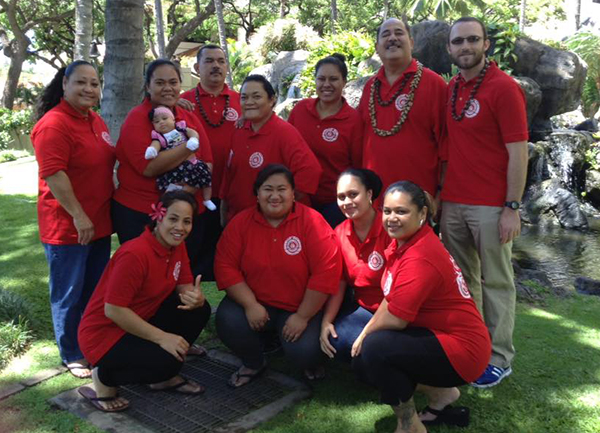
Commonwealth of the Northern Mariana Islands
CHL Team Commonwealth of the Northern Mariana Islands
Due to Typhoon Soudelor, the CNMI team was unable to provide a report for this period. We wish them a speedy recovery!
Freely Associated States of Micronesia
CHL Team Freely Associated States
Data collection for the prevalence surveys has been completed in all of the FAS States. In total, over twelve hundred children from across the region were screened and measured. Team members are currently working to complete data entry as well as reporting findings back to their respective communities. The FAS team wishes to thank all our partners and participants across the region.
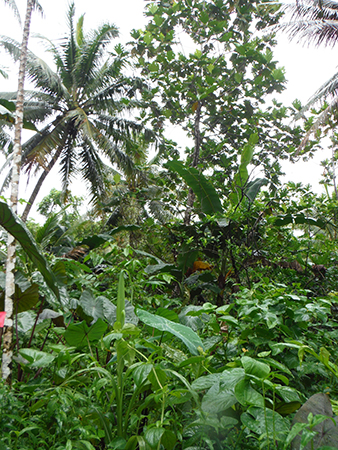
In other news, after months of preparation, the FAS team began a study in spring of this year that focused on food production in the Pohnpeian agroforests. Agroforests, pahnwel or nansapw in Pohnpeian, are cultivated, mixed-species forests that have been a source of local and traditional foods such as breadfruit (mahi), banana (uht), and giant swamp taro (mwahng) for many centuries. Our study seeks to characterize these food systems and investigate if food productivity can explain differences in food consumption and children’s health.
Two Pohnpeian communities (Sekere and Wenik) with contrasting prevalence weight data were chosen as sites to administer a questionnaire that asked participants about the crop types, yields, and uses of their agroforests. Meetings were held on April 21 and 23, 2015, with nineteen and twenty-three participants being surveyed in Wenik and Sekere, respectively. Following the questionnaire, agroforests of ten randomly-selected participants in each community were then surveyed for species diversity and crop yields. Agroforests were visited April 28-May 27 and again August 1-10, 2015, with participants monitoring and recording crops harvested during June-July 2015. Currently, questionnaire and field survey data are being compiled and analyzed to see if differences in each community’s food system can help to explain differences in anthropometric and food consumption data. We would like to express our thanks to our partners at state and federal agriculture divisions, Island Food Community of Pohnpei, the College of Micronesia, and the local community for their immense support that made our study possible.
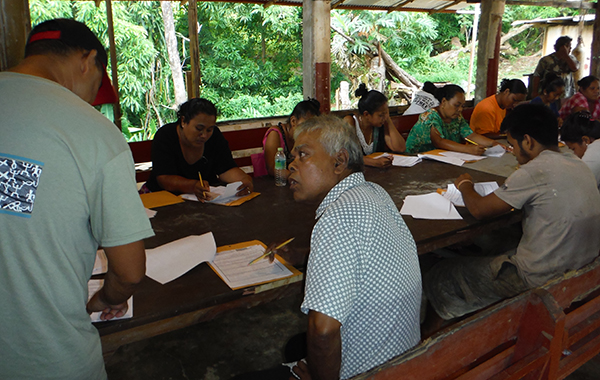
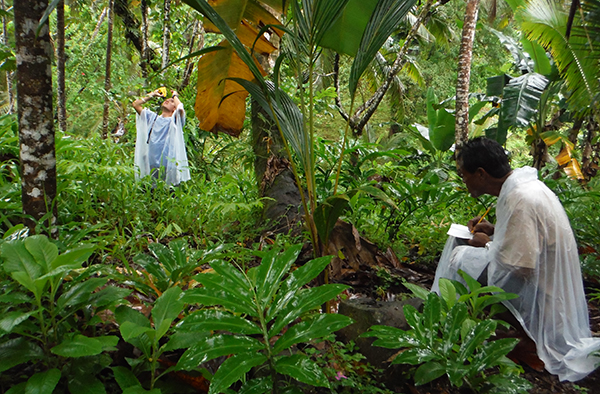
Guam
CHL Team Guam
The Children’s Healthy Living (CHL) Program, in collaboration with the University of Guam’s Expanded Food and Nutrition Education Program (EFNEP), Agriculture and Natural Resources (ANR), and Guam Head Start conducted a pilot summer program in Marcial Sablan and Maria Ulloa Elementary Schools.
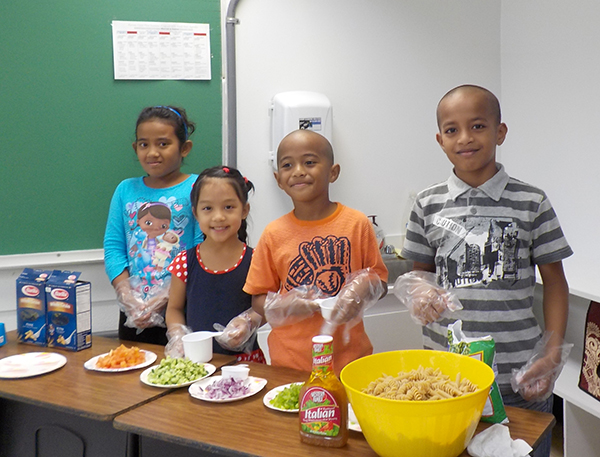
This pilot project aimed to provide parents and children in the Head Start program a complementary nutrition education program that is supplemented with gardening workshops. The nutrition education series is designed so that parents and children are learning the same concepts and applying these concepts to a food preparation activity. The nutrition lessons were designed across a span of two weeks. The children targeted for this program are those transitioning into Kindergarten; therefore, they are 5-year-olds and their sibling’s ages 5-12.
Gardening lessons included: How to start a plant nursery, Plant propagation from seeds and cuttings, Mulching and Sheet Mulching, Water in the garden, Soil Management, Raised beds, Container gardening, and Composting.
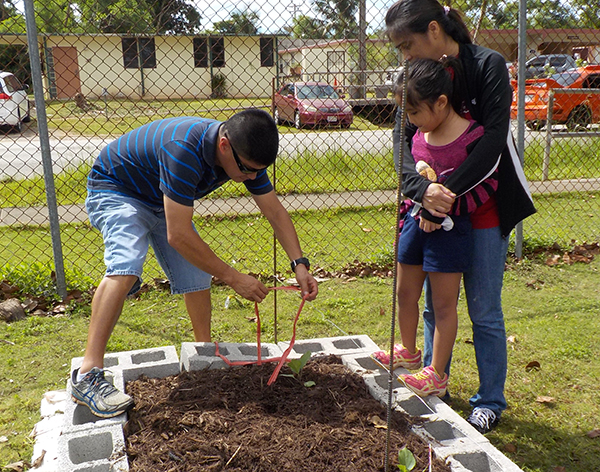
Adult nutrition education lessons included: Get Moving, which stressed the importance of physical activity. Plan, Shop, and Save, Varying your veggies, Making half your grains whole, Building strong bones, Go lean with protein, Make a change (sugary, salty, and fatty foods), and Celebrate (a review of all lessons).
Youth nutrition education lessons included: Food safety and hand washing, Preparing more foods from home, Kitchen safety, Enjoying more fruits and vegetables, Identifying MyPlate and Right size portions, Rethink your drinks, Close to the source and function foods, and Label reading and food miles.
This pilot program proved successful and will be continued next summer clustering participants from the northern, central, and southern schools on Guam.
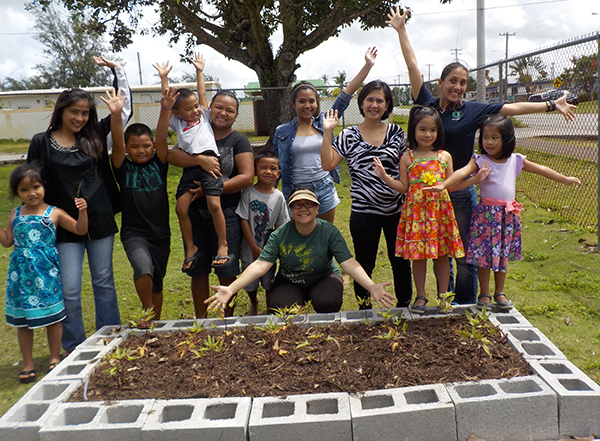
Hawai‘i
CHL Team Hawai‘i and CHL wide Coordinating Center
CHL 24-month (post-intervention) measurements began in November of 2014 with Alaska. Thanks to the children, parents, and community partners who helped CHL with recruitment and data collection, the 24 month measurements for all five intervention jurisdictions are almost complete (Table 1 includes a report of current numbers). The Commonwealth of Northern Mariana Islands (CNMI) was the first to complete their measurements with American Samoa following. Hawaii is almost done, having only Waimanalo left. Alaska and Guam are both more than half way done and have a measurement completion goal of the end of August, 2015. We can soon celebrate the collective efforts to recruit participants and collect the vast amounts of data on our children and communities. These data includes the anthropometry measurements, which are part of “other forms”, food and activity logs (FALs), accelerometer activity counts, and the community assessments.
All this information needs to be entered electronically for data warehousing and analysis. To ensure high quality data, data are entered twice and are then validated –a process of comparing the first and second entry for error. Generally, jurisdictions complete first data entry, then the Coordinating Center (CC) completes second data entry, and lastly the CC completes the data validation for everything, except the FALs, which goes to the Cancer Center Nutrition Support Shared Resources for a second review. For CHL 24-months, the CC has also taken over responsibilities for first data entry for some forms and FALs for other jurisdictions. Table 1 gives a summary of the data entry and validation tasks conducted at the CC.
Table 1. Summary of CHL 24-month data tasks at the Coordinating Center (CC)

Climbing this mountain of data takes a team of people! Since February 2015, 18 students have been hired and trained for the task of data entry and data management, with 14 data entry stations.This super team is led by Fenfang Li, Dmitry Krupitsky, Mira Sharma, and Elise Leimomi Dela Cruz-Talbert who make sure the whole process runs smoothly. The CHL IT team, composed of Michael DeBusk, Erik Hill and Jeff Tamashiro, has also been essential in providing needed technical support, such as setting up data entry stations and conducting data transfers.
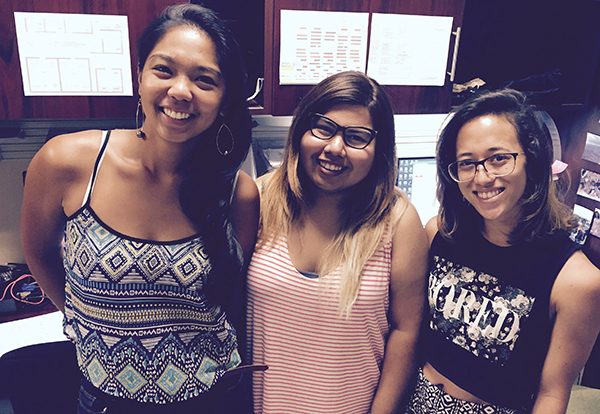
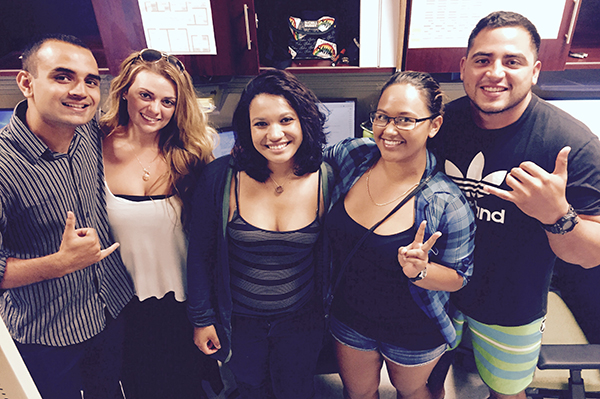
Once all the data are validated it is cleaned; variables such as BMI are calculated, and the study questions are analyzed. Lynne Wilkens, Carol Boushey and Fenfang Li head up the data analysis and reporting of data back to communities. They have done a super job! To see an example of their work please check out the baseline community reports on this web site. Just click on the “Findings” tab and then on the “Community research reports 2013-2014” and explore! Happy reading!

